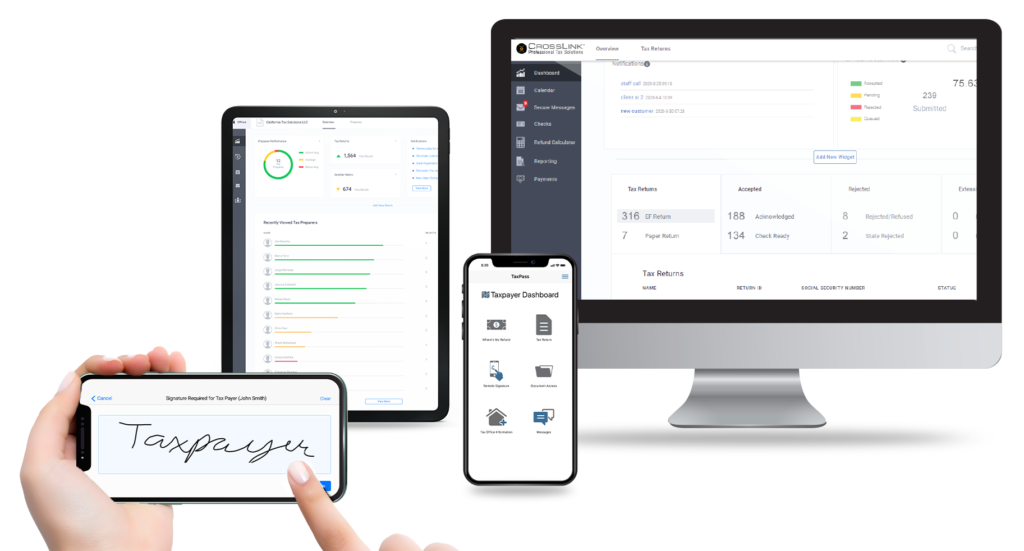What is the Premium Tax Credit?
The Premium Tax Credit is a refundable tax credit for certain people who enroll, or whose family member enrolls, in a qualified health plan that they obtain through a health insurance Marketplace. This credit provides financial assistance to pay the premiums for a qualified plan by reducing the amount of tax the taxpayer owes.
Most individuals who obtain their health insurance through a Marketplace will receive an advance of their premium tax credit. This advance (subsidy) goes directly to the insurance company and thus reduces the amount of premium they pay for their health insurance each month. The amount of the advance premium tax credit is based on income and family size from the taxpayer’s prior year income tax return.
If the taxpayer received a subsidy (advance premium tax credit) the amount of subsidy they received needs to be reconciled with the premium tax credit calculated when they complete their federal tax return. The credit and the reconciliation calculation are done on Form 8962.
For more information see the following on the IRS website:
- The Premium Tax Credit – The Basics
- IRS Publication 974 (Premium Tax Credit)
- IRS Publication 5120 (Facts About the Premium Tax Credit)
Premium Tax Credit Changes Under the American Rescue Plan
For 2022 – 2025, taxpayers who purchased their health insurance through an Exchange (Marketplace) may see an increase in their premium tax credit. Under the American Rescue Plan Act, the amount that an individual must contribute towards paying for their health insurance based on the benchmark silver plan is reduced at every income level. This will result in an increase in the credit for most eligible individuals.
The American Rescue Plan extended the credit to individuals with household income greater than 400% of the federal poverty level (FPL) by applying an applicable percentage of 8.5% of their annual household income that these individuals must contribute to their health insurance premiums for Tax Years 2021 and 2022. The Inflation Reduction Act extended these provisions for three additional years (2023 – 2025).
The maximum contribution percentages by household income for the Premium Tax Credit for 2022 – 2025 are:
| Income as Percent of Federal Poverty Level | Maximum Percent of Income |
| 100% – 150% | 0% |
| 150% – 200% | 0% – 2% |
| 200% – 250% | 2% – 4% |
| 250% – 300% | 4% – 6% |
| 300% – 400% | 6 % – 8.5% |
| 400+% | 8.5% |
For more details see the American Rescue Plan and Marketplace Fact Sheet on the Centers for Medicare and Medicaid Services website.
ACA Marketplace Plan
Under the Affordable Care Act Health Insurance Marketplaces were set up to help people find health coverage that fits their needs and budget.
Every health plan in the Marketplace offers the same set of essential health benefits, including doctor visits, preventive care, hospitalizations, prescriptions and more.
To be eligible to use the Health Insurance Marketplace the individual:
- Must live in the United States
- Be a U.S. citizen or national (lawfully present)
- Cannot be incarcerated
No matter what state a taxpayer resides in they can use the Marketplace. Some states operate their own Marketplace. In other states, the Marketplace is run by the federal government.
For more information see the Health Insurance Marketplace page on the IRS website.
How Does PTC Work

The calculation of the Premium Tax Credit is performed on the Form 8962. It is a three-step process:
- Step 1 – The premium tax credit is calculated based on the taxpayer’s yearly income and family size as reported on their federal income tax return.
- Step 2 – The monthly advance premium tax credit is entered on the Form 8962. This information is obtained from the taxpayer’s Form 1095-A (Health Insurance Marketplace Statement) that they received from the Marketplace where they obtained their health insurance.
- Step 3 – A reconciliation takes place by subtracting the advance premium tax credit from the calculated premium tax credit and the result is:
- A refundable credit if the calculated credit is greater than the total advance premium tax credit they received during the year.Or
- Additional tax if the total amount of advance premium tax credit is greater than the calculated premium tax credit.
Form 8962
This is the form that is used to calculate the premium tax credit for taxpayers that obtained their health insurance through either the Federal or a State Marketplace and are eligible to claim the premium tax credit.
In most cases, these taxpayers will have received an advance premium tax credit (subsidy) during the year that helped pay their monthly health insurance premiums. If they did receive a subsidy, then Form 8962 is also where the reconciliation of the advance premium tax credit and the calculated premium tax credit is done.
Any taxpayer who received a subsidy must complete Form 8962 and reconcile the calculated premium tax credit (which is based on their actual yearly income and family size) with the total advance premium tax credit they received during the year.
Also, any taxpayer who obtained their health insurance through a Marketplace will receive a Form 1095-A (Health Insurance Marketplace Statement) which they will need to complete the Form 8962.
For more information, see the following on the IRS website:
Excess Advance Payment of Premium Tax Credit
If the result of the reconciliation of the amount of advance premium tax credit the taxpayer received during 2021 is greater than the calculated credit, the taxpayer will have to repay the excess as an additional tax on their 2021 federal tax return. If this occurs, it will be shown on the 2021 Form 8962 (Premium Tax Credit), Part III, line 29. In certain circumstances, the amount that must be repaid may be limited.
In 2020, legislation was enacted that waived the requirement that taxpayers did not have to pay back any excess premium tax credit for Tax Year 2020 only.
For more details on how an excess amount is calculated and when the amount may be limited, see the 2021 Form 8962 instructions beginning on page 15.
Excess Premium Tax Credit Repayment
If the taxpayer received an advance premium tax credit (subsidy) to help pay for their monthly health insurance premiums, a reconciliation of their total amount of advance premium tax credit with the calculated premium tax credit will be done on Form 8962.
Since the amount of the advance premium tax credit is calculated based on income and family size from a prior year, the total advance received will probably not equal the calculated premium tax credit which is based on the income and family size reported on their federal tax return.
If the amount of advance premium tax credit is greater than the calculated credit, then the taxpayer will have to pay back the difference. It is reported as an additional tax on Form 1040, Schedule 2 and is calculated on Form 8962, Part III.
Premium Tax Credit Repayment Exceptions
There is no exception to having to repay any excess premium tax credit that results from receiving more advance premium tax credit than the calculated credit
Any excess premium tax credit will be limited to a maximum amount of the taxpayer’s household income as percentage of the federal poverty line (as reported on Form 8962, line 5) is as follows:
| Form 8962, line 5 Percentage | Filing Status of Single | All other filing status’ |
| Less than 200% | $325 | $650 |
| 200% – 299% | $825 | $1,650 |
| 300% – 399% | $1,400 | $2,800 |
If the percentage on Form 8962, line 5 is 400% or higher, the entire amount of any amount of excess premium tax credit is due.
For more information on when any excess premium tax credit is limited, see the Form 8962 instructions on page 15 (Line 28 instructions).
CrossLink Professional Tax Software

CrossLink is the industry’s leading professional tax software solution for high-volume tax businesses. Built based on the needs of busy tax offices and mobile tax preparers that specialize in providing their taxpayer clients with fast and accurate tax returns, CrossLink has been a trusted software solution since 1989. CrossLink’s in-depth tax calculations, advanced technological features, and paperless solutions allow you to prepare the most complicated tax returns with confidence and ease while providing your customers an unparalleled experience.






